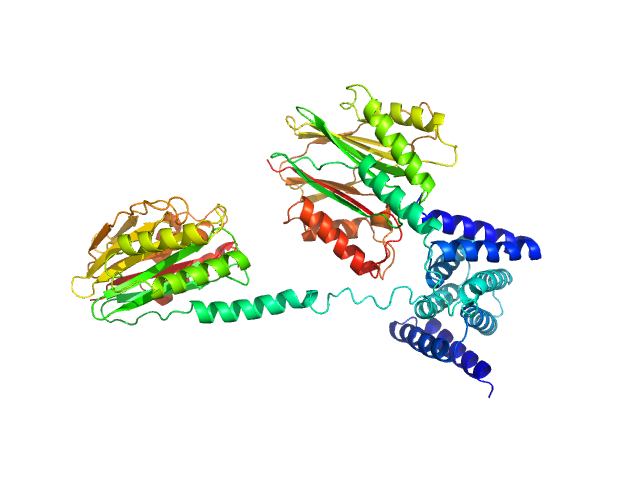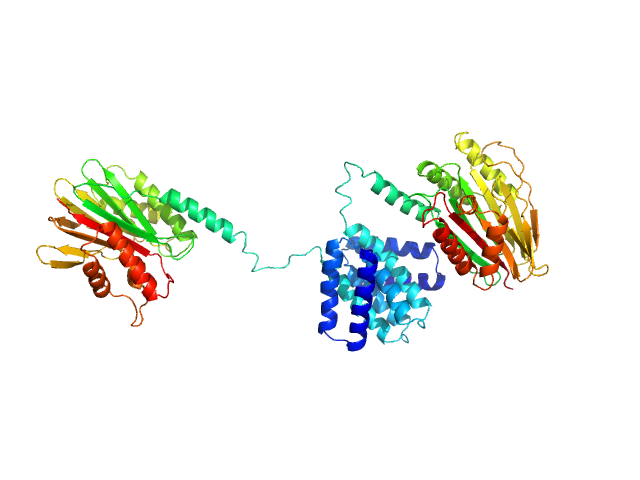|
Synchrotron SAXS data from solutions of wild-type phosphoserine phosphatase RsbU in 20 mM HEPES, 100 mM NaCl, 5 mM DTT, pH 7.5 were collected on the BioCAT 18ID beam line at the Advanced Photon Source (APS), Argonne National Laboratory (Lemont, IL, USA) using a Pilatus 100K detector at a sample-detector distance of 3.7 m and at a wavelength of λ = 0.1033 nm (I(s) vs s, where s = 4πsinθ/λ, and 2θ is the scattering angle). In-line size-exclusion chromatography (SEC) SAS was employed. The SEC parameters were as follows: A 300.00 μl sample at 3.5 mg/ml was injected at a 0.60 ml/min flow rate onto a GE Superdex 200 Increase 10/300 column at 22°C. 2580 successive 0.500 second frames were collected. The data were normalized to the intensity of the transmitted beam and radially averaged; the scattering of the solvent-blank was subtracted.
RsbU is a serine/threonine PPM phosphatase from B. subtilis. This sample was run in the absence of its native activator, in its assumed inactive state.
|
|
 s, nm-1
s, nm-1

